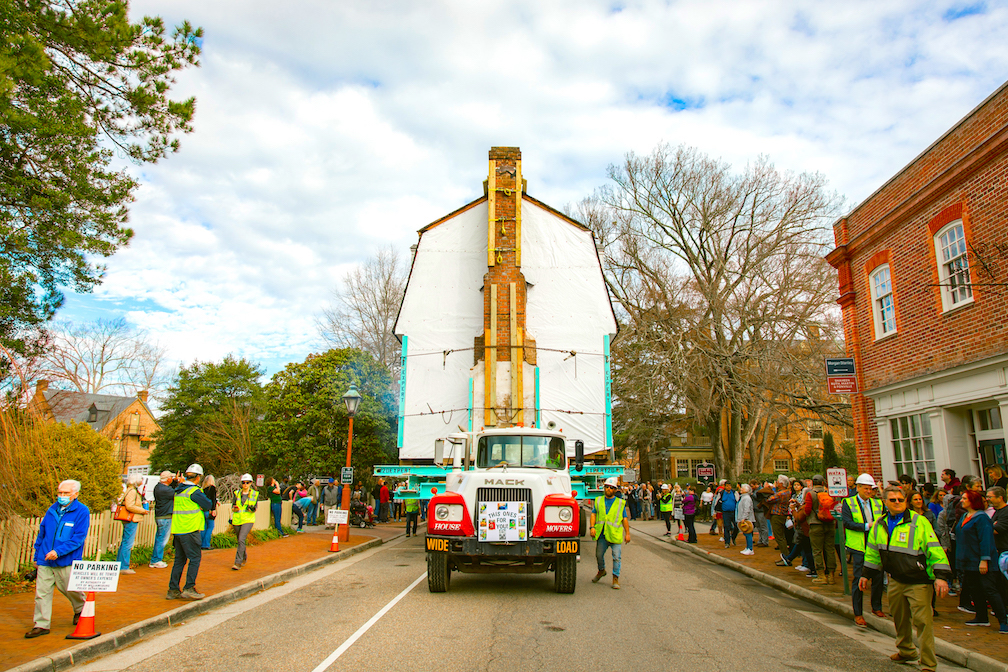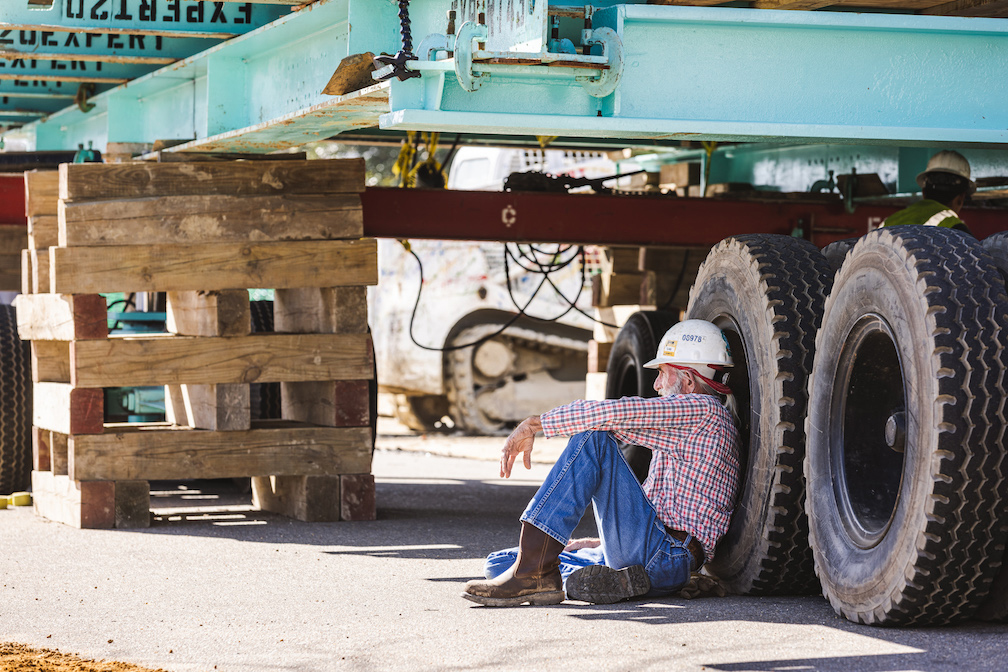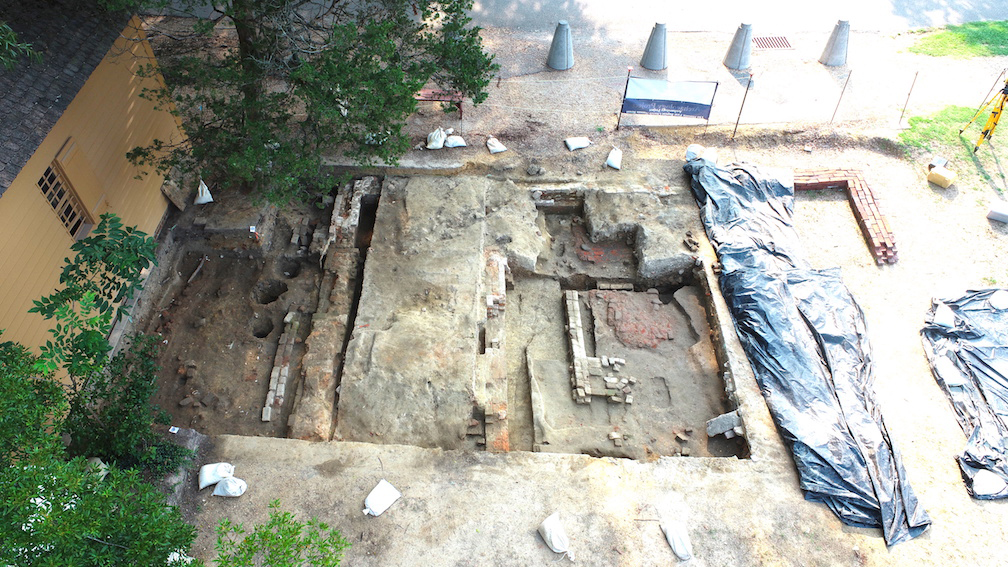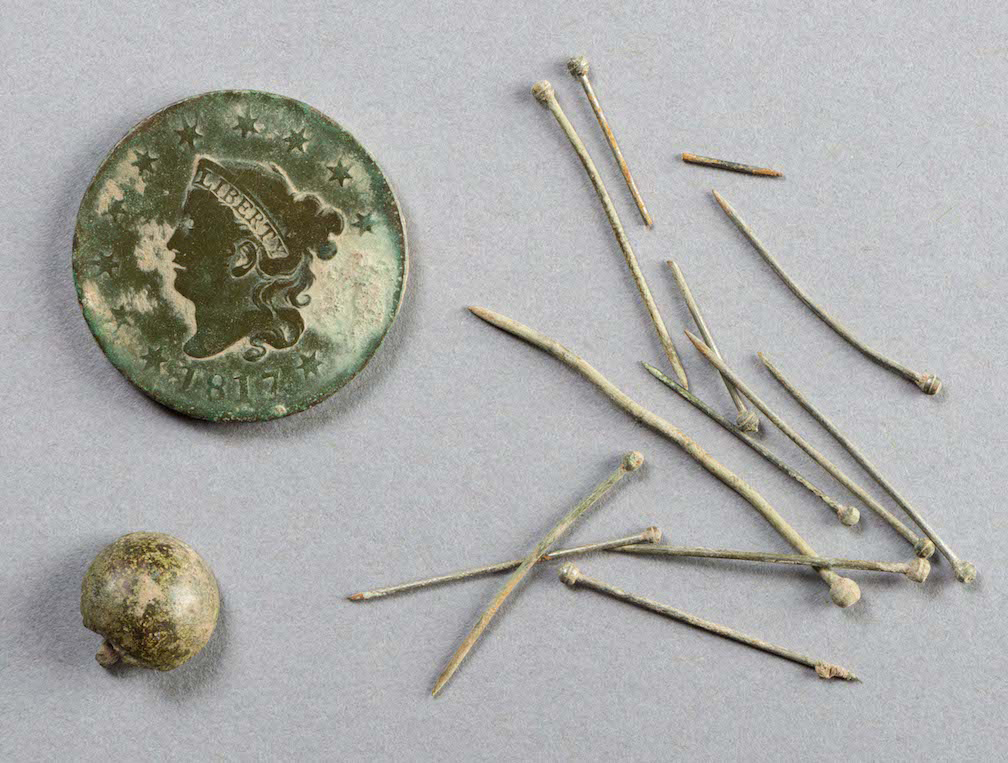| |
Making old new again at Colonial Williamsburg
By Tom Adkinson
September 22, 2023

Spectators lined the streets of Colonial Williamsburg to watch the relocation of the Bray School building that had been overlooked for 200 years. Image by Colonial Williamsburg
|
WILLIAMSBURG, Va. – What is old at Colonial Williamsburg is very old, but this perennial popular Virginia attraction has a skill at turning what is old into something new again.
Three contemporary examples stand out. One is a school for colonial Black children that was hidden in plain sight for more than 200 years, another is a church that was created in secret for Black colonial worshipers and the third is a facility that will pull back the curtain on how archaeological work is done after artifacts come out from their hiding places.
The Bray School is the oldest existing building dedicated to educating Black children in the U.S. It operated from 1760-1774, and when it shut down, its building became just another aging structure at the edge of the College of William & Mary campus.

A workman takes a break from the delicate process of moving a colonial-era building from its original site to Colonial Williamsburg’s historic district. Image by Colonial Williamsburg
|
It wasn’t until 2020 that researchers from Colonial Williamsburg and William & Mary discovered that what they knew as the Bray-Digges House was so historically important.
While educating both free and enslaved young Blacks has a certain air of nobility, a video about the Bray School is clear about the intent of its Anglican patrons. The video notes that the school was “founded on a deeply flawed purpose – directing enslaved students to accept their circumstances as divinely ordained.”
Researchers began the arduous task of looking back in time to what the building was originally, removing additions put on in the 1800s and 1900s, ascertaining the original roofline and cataloging every artifact they found. In 2023, experts gingerly prepared the building to roll on a huge trailer to a site in Colonial Williamsburg’s historic district.
It is the 89th structure in the historic district, and it will open for visitation and interpretation in 2024.

This archaeological dig carefully unearthed the foundation lines of First Baptist Church. A replica of the structure will open in 2026, the congregation’s 250th anniversary. Image by Colonial Williamsburg
|
Worship was important to Williamsburg’s enslaved population, but gathering to worship wasn’t easy. Today’s First Baptist Church in Williamsburg traces its roots to a brush arbor in 1776, where a free Black itinerant preacher known as Rev. Jones led the faithful.
By 1803, the worshipers had a building, the first permanent home of a congregation founded by free and enslaved Blacks. The congregation today meets in a church built in 1956, but Colonial Williamsburg is filling in a piece of the congregation’s history with a major construction project.

Work on artifacts such as these from First Baptist Church will be studied in the Campbell Archaeology Center, which will open in 2025. Image by Colonial Williamsburg
|
In the historic district, you can see the outline of First Baptist’s 1803 home, a location Colonial Williamsburg has thoroughly researched. The plan is for a replica church to open in 2026, the congregation’s 205th year.
Some of the work of uncovering the Bray School and finding the exact location of First Baptist’s 1803 church is conspicuous. The archaeologist’s fieldwork occurs out in the open, but what happens after that in research and laboratory space?
That answer will come, at least in part, with the 2025 opening of the
Colin G. and Nancy N. Campbell Archaeology Center.
“This facility (will allow) us to show guests a side of archaeological research that most people don’t see – the process of discovery inside the lab,” said Jack Gary, director of archaeology.
Trip-planning resources: ColonialWilliamsburg.org and Virginia.org
|



